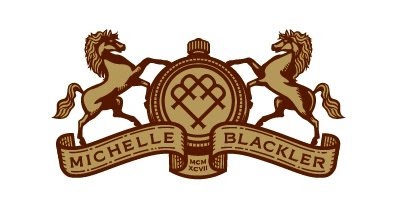This trove of High Flyer Phaeton lore from The Republic of Pemberley, a discussion site for "Jane Austin Fanatics" is really quite perfect:
"When George III's son was Prince of Wales he cut a dash as a sporting blood. One of his more spectacular diversions was driving himself and perhaps a friend to the races in a high-flyer phaeton. This was the hot rod of its time, an incredible vehicle, which like the Roman carruca had only one real purpose - to attract as much attention as possible. One reputable expert has claimed that this vehicle never existed and that contemporary drawings of it were caricatures, but the scathing descriptions written by people who saw it leave little doubt that it actually looked about like the drawing. It took a fool's courage to ride in it, for it swayed violently and was obviously top-heavy, especially with the oversize Prince aboard. he used a ladder to get up and down. With all the high-flyer's absurdity it was the jumping-off point for a new era of lightness and elegance in coach-building which reached its peak some 35 or 40 years later. In his obese age the same gentleman had another phaeton built. for obvious reasons as low as possible. it is known as a George IV phaeton and was a direct ancestor of the graceful Victoria.'
 |
| A restoration work of Dieter Gaiser, the vehicle is by Outridge of London. |
In the Regency Companion by by Laudermilk and Hamlin, they give this explaination of the phaeton: 'These light four-wheeled carriages were drawn by two. four or six horses. Over the front wheels were one or two feet higher than the four to five feet front wheels. The precarious height turned them into a challenge that no game buck refused. Prinny's love of tooling his phaeton to Brighton helped usher in driving as a fashionable pastime. various types of phaeton's included perch, crane-neck, high-perch and high-fliers.
There are many types of phaetons. They are four-wheeled carriages meant to be driven by two or more horses, with the front wheels being smaller than the back wheels. They could be small and low, as favored by children and obese older monarchs (even pulled by ponies), or they could be high and wild. The latter were called "perch," "high-perch," or "high-flyer" phaetons. There is a painting by Stubbs showing Prinny's high-flyer phaeton-- he is standing behind it, and he can just barely see the floor, which is above the backs of the horses. In a book I have, there are several pictures of high-perch phaetons, including a couple of designs for "a High Crane-neck Phaeton" for Prinny. "This type of vehicle was known as a 'Highflyer' -- the crane-neck type of perch undercarriage having been built with an arch so that the front wheels could turn under when going round corners."
"It was customary when driving the then currently fashionable high phaetons which could be drawn by four, six, or eight horses, for the leaders to be ridden by postillions, but this method was potentially very dangerous (as Oliver Cromwell had discovered to his cost) for, if a postillion rider were to fall off, then the driver, with only the reins of the wheelers in his hands, was powerless to control the team. Since the young Prince and his friends often drove this type of turnout, a safety device was invented consisting of a lever [pedal] which, when pressed by foot from the box-seat, could open the pole-hook and thus release [the bars to which] the leaders [were attached], and at least two engravings depicting this device were printed."
The engraving in the book shows a lady driving a very high-perch phaeton. The postillion has fallen to the ground, she has pressed the pedal, and the leaders gallop away while she reins in the wheelers. It says that the lady is believed to be Letty, Lady Lade. Her husband, Sir John Lade, was an intimate of Prinny's and a founding member of the Four-in-Hand Club. They were a very dashing and sporting couple, both extremely horse-mad, and Lady Lade's high-perch phaeton, which she drove reguarly in Hyde Park, both scandalized and awed society. A few ladies tried to imitate her prowess, and since none could equal her skill, you see caricatures like the one I think Roger posted. Many ladies did however drive, even if not high-perch phaetons; even Princess Charlotte drove a phaeton and four in the park (although my source does not say whether the phaeton was high and whether the leaders were driven by postillions).
Letty Lade was notorious for other reasons as well-- before Sir John married her she had been the mistress of a highwayman, "Sixteen-string Jack," who had been hanged at Tyburn. She was not at all genteel, and despite the Prince's pointed public attentions to her to try to make her acceptable to Society, she remained beyond the pale. For one thing, she swore like a sailor, and even the Prince said, when he heard anyone curse luridly, "he swears like Lady Lade." I have often wondered if the origin of the term "fast" regarding unladylike behaviour originated with Letty Lade."
This illustration from a fashion magazine of 1794, captioned “Two young ladies in calico taking an airing in a phaeton,” is by the celebrated Humphrey Repton.



























